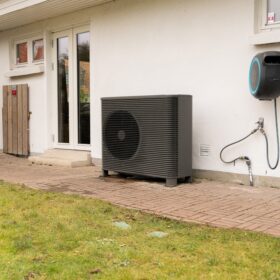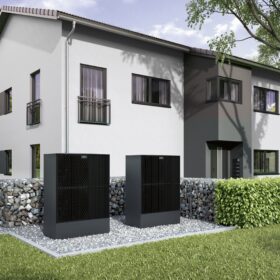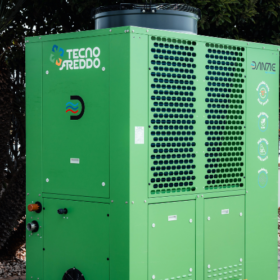UK unveils ‘smart ready’ heat pump regulations, new utility flexibility rules
Heat pump manufacturers will need to meet ‘smart ready’ standards under new appliance regulations, including stricter rules on cybersecurity. Utilities will be obligated to ensure battery energy storage systems, heat pumps and electric vehicle smart charge points can work across different tariffs under tariff data framework.
Viessmann launches new residential air-to-water heat pumps
The Germany manufacturer said its new heat pump systems use propane (R290) as the refrigerant and are able to provide a maximum flow temperature of 70 C. Their coefficient of performance ranges from 4.7 to 5.1.
Solar-air-ground CO2 heat pump system for renewables maximization
Researchers in Italy have designed a novel carbon dioxide heat pump that can work with photovoltaic-thermal energy, a finned coil heat exchanger and a U-tube borehole heat exchanger. Their experiment has shown that the simultaneous use of at least two energy sources always results in improved system performance even with limited heat transfer areas.
Rhoss launches reversible heat pumps
Conceived for industrial applications, the novel heat pumps can reportedly deliver hot water at 65 C from -10 C up to 35 C of external air, and hot water at 55 C down to -20 C of external air. Their coefficient of performance reaches up to 3.60.
PV-driven heating, cooling system for supermarkets
Scientists in China have developed a novel PV-powered cooling and heating system that combines a water-cooled gas cooler and an air-cooled gas cooler. The system went through a series of simulations and showed it can potentially achieve a coefficient of performance of up to 7.34.
Frascold, Tecnofreddo present high-temperature propane heat pump
Conceived for industrial applications, the Danae heat pump system is available in 10 versions with cooling capacities ranging from 22.1 kW to 156.9 kW and heating capacities spanning from 24.8 kW and 181.6 kW.
California introduces bill to accelerate heat pump adoption
With California projected to fall two million installations short of its 2030 target, the bill aims to make installing heat pumps and HVAC systems faster and easier.
Optimizing residential PV-driven heat pumps with lithium-ion batteries reduces LCOE by 7%
Scientists in Spain have simulated the combination of power-to-heat-to-power storage systems with lithium-ion batteries to supply energy needs and heat pump production of an electrified dwelling. PV self-consumption was found to increase by up to 20% and levelized cost of energy decrease by 7%.
Amitime unveils residential propane heat pump
The Chinese manufacturer said its new heat pump system can continuously and stably provide hot water up to 75 C. At a temperature between 35 C and 55 C, the new product can reportedly achieve a seasonal coefficient of performance (SCOP) of 4.6 to 5.23, with COP values ranging from 3.86 to 5.63.
Navien unveils 4-17 kW air-source heat pump for residential applications
The South Korean heating specialist said its new heat pump system can achieve a seasonal coefficient of performance of up to 4.79 and flow temperatures of up to 75 C.









